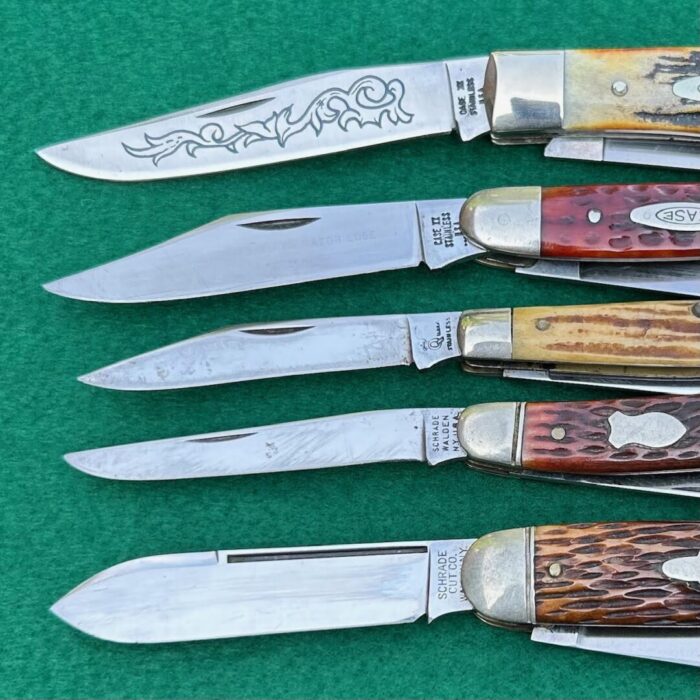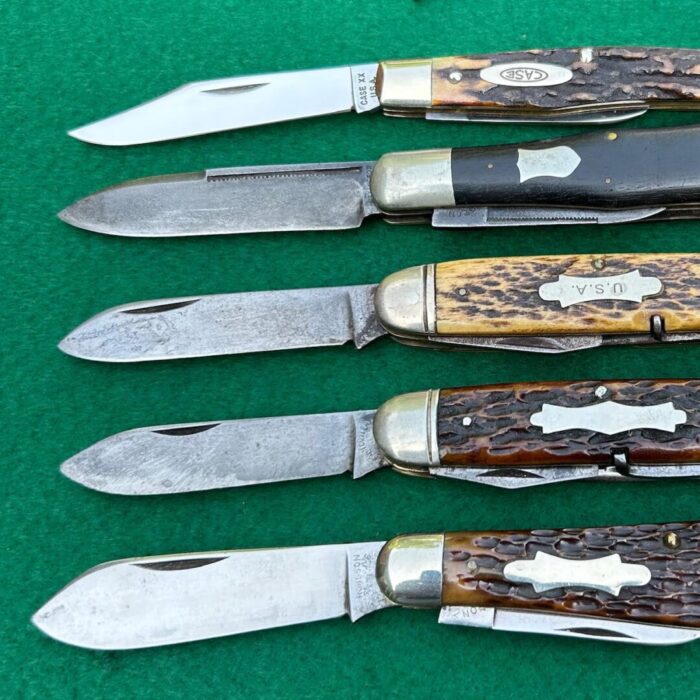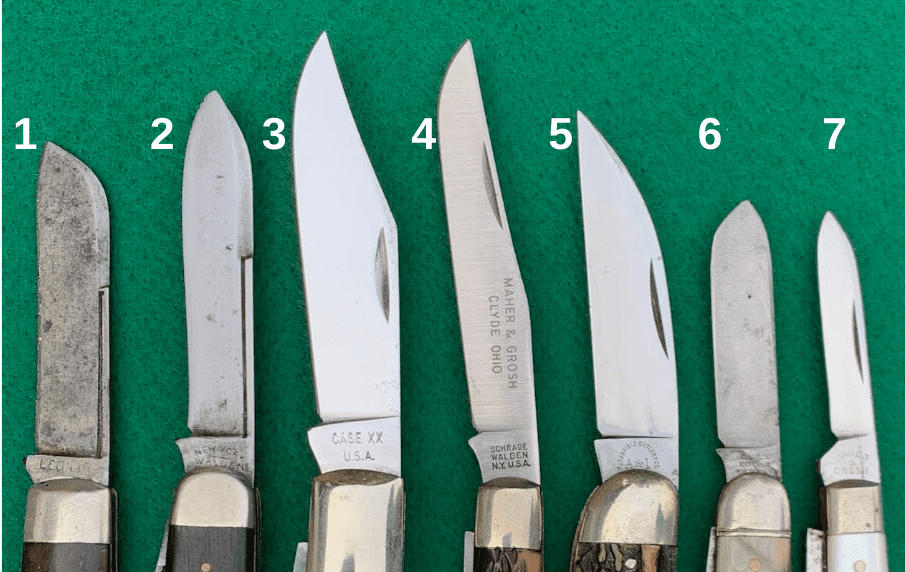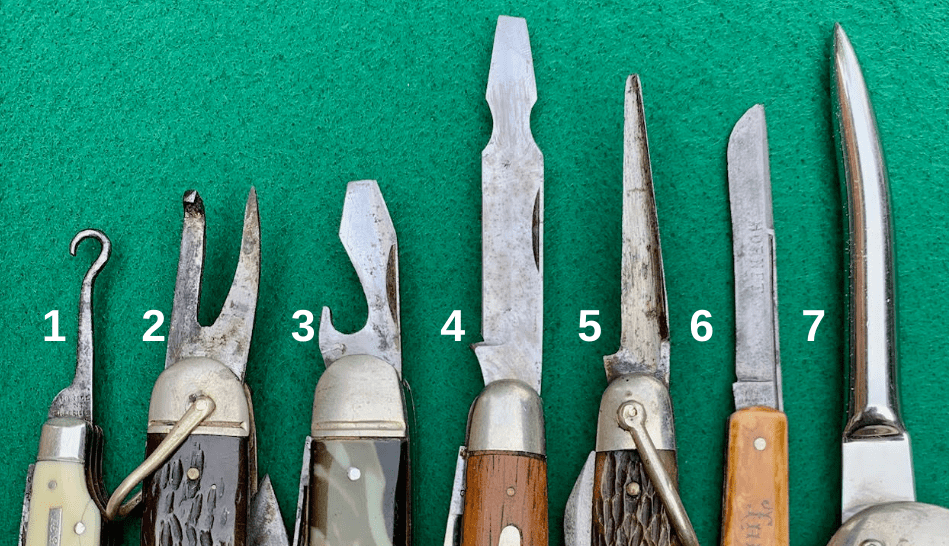Guide to Collecting Pocket Knives, part III
Thanks for checking out my guide to collecting old pocket knives. I hope you find this information useful and enjoy the content. The following may contain affiliate links.
Blade Types
Common Blades – There are many blade styles that you will encounter on pocket knives; each designed to perform a specific function. I have found it enjoyable to collect knives with different types of blades while others focus on knives with specific blade types. Here are some of the more common blades you will see on pocket knives.
- Sheep Foot – long, straight cutting surface with a blunt tip to avoid accidentally stabbing livestock or puncturing objects while working. Commonly found on stockman and congress knives (Leonard).
- Spear – all purpose blade blade that is symmetrical and is handy for piercing (New York Knife Co).
- Clip – top third of spine appears to have been clipped or broken off revealing a point at the tip. (Case XX).
- Long Clip commonly found on trapper knives, this blade is narrow and over half of the blade appears to have been “clipped” (Schrade Walden / Maher Grosh).
- Wharncliffe – Straight cutting edge while the back of the blade has a long taper. Uncommon blade but typically found on old whittlers (Elberfield Cutlery Co A*1).
- Spey – straight cutting surface gives way to a quick curve near the end of the blade commonly used in certain procedures in livestock (Schrade Cut Co).
- Pen – common as a secondary blade on jack knives, appears as a small spear point. (Maher & Grosh).
Specialty Blades – There are also specialty blades that perform certain tasks. The following list is by no means exhaustive but includes some of specialty blades that you may see.
- Button Hook – tool that assisted in the closing the buttons on shoes or other clothing. Old shoes and clothing had many buttons and zippers were not yet common (Nowill & Sons Sheffield).
- Can Opener – older style pre 1940. Would seem tedious to use one of these with the can openers of today (IKCo).
- Screwdriver / Cap Lifter – the top portion can be used as a screwdriver while the hook helped to remove a bottle cap (Colonial).
- Screwdriver / Wire Scraper – this blade is most commonly seen on TL-29 WWII knives and was used to help with electrical work (Case XX).
- Punch – typicall used for creating holes in leather. They are commonly found on cattle, scout and harness knives (Ulster Knife Co).
- Corn Blade – used to trim the corns off of feet…shoes 100 years ago were not as comfortable as the ones we wear today (Hornet – Simmons).
- Marlin Spike – used to undo knots and help in marine ropework (Case XX).
Blade Steel
Pocket knives typically utilize two main types of blade steel: stainless steel and carbon steel. Stainless steel is favored for its resistance to corrosion and rust, making it ideal for knives that may be exposed to moisture or humidity. It maintains its sharpness well and is relatively easy to maintain. Stainless steel was invented in the early 1900s and gets its non corrosive properties from the addition of at least 10.5% of the element chromium.

On the other hand, carbon steel is prized for its ability to achieve a sharper edge and hold it longer than stainless steel. However, it is more prone to rust and requires more diligent maintenance to prevent corrosion. 1095 steel is commonly used on knife blades and contains approximately 1% carbon and very small amount of manganese, sulfur and phosphorus.

In general you will be able to tell them apart as stainless steel is usually marked somewhere on the blade while carbon steel will generally show some tarnish and sometimes rust on an older knife. Check out this article is you want to know more about blade steels.


